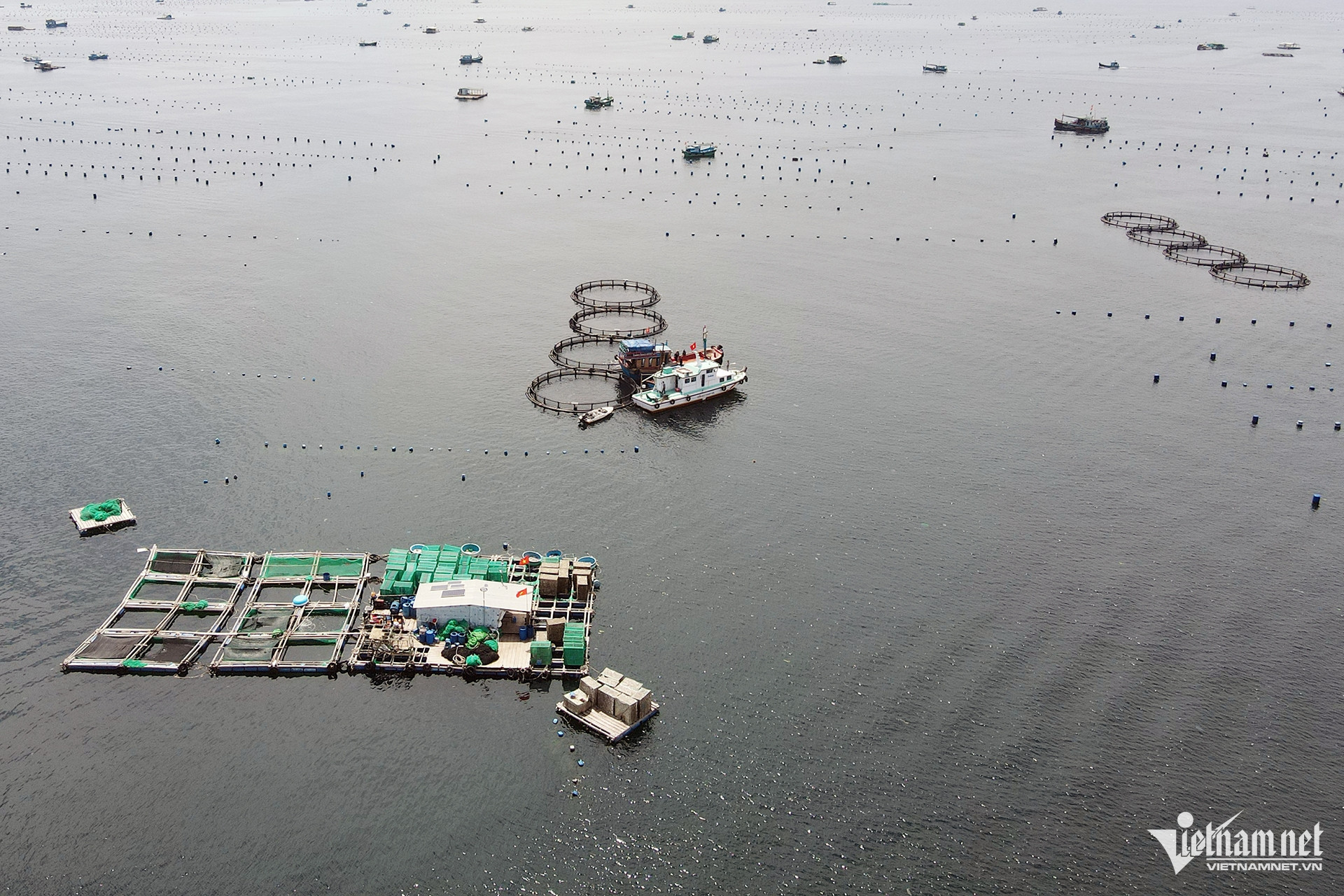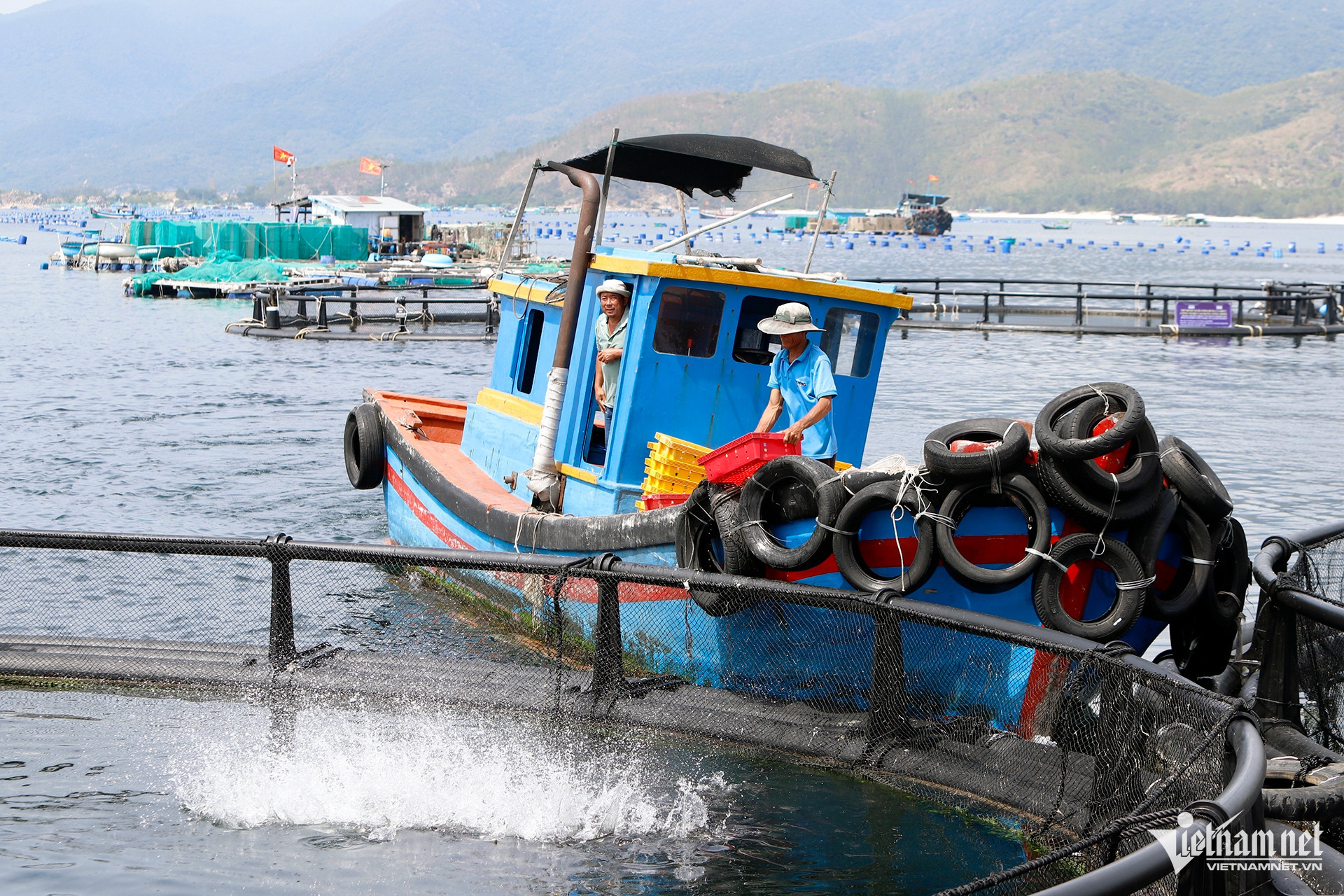With significant advantages in aquaculture and seafood harvesting, Khanh Hoa province is setting its sights on reaching $1 billion in seafood exports in 2025.
This ambitious goal was shared by Nguyen Duy Quang, Director of the Department of Agriculture and Rural Development of Khanh Hoa (DARD), in an interview with VietNamNet at the start of the new year.
High-tech marine farming generating billions in revenue

Khanh Hoa is at the forefront of marine farming in Vietnam, applying high-tech aquaculture models that have delivered outstanding economic results.
The adoption of modern materials and automated systems - such as HDPE cages, environmental monitoring devices, automatic feeders, self-cleaning sensors, and surveillance cameras - has helped reduce costs, minimize risks, control disease outbreaks, increase productivity, and protect the marine environment.
In 2023, at the open-sea farming area in Cam Lap commune, Cam Ranh City, locals adopted high-tech marine farming cages. Ten households participated, operating 16 circular HDPE cages and 12 square HDPE cages, farming fish and lobsters.
“Our cages are equipped with GPS tracking and 24/7 remote monitoring via electronic devices,” said Nguyen Van Cu (41 years old), who owns two high-tech marine farming areas spanning 1,600 cubic meters.
Transitioning to sustainable, resilient aquaculture
Cu recalled that his family previously relied on traditional wooden cages, which led to unstable incomes and constant worry about damage during storms and heavy waves. However, after switching to HDPE cages, those concerns have significantly diminished.
HDPE cages are environmentally friendly, storm-resistant, and have a lifespan of up to 30 years. Each cage requires an investment of $11,200, but fishermen receive up to 70% financial support.
Using high-tech marine farming methods, Cu has achieved higher productivity and safer operations. In a recent cobia harvest, despite market prices being lower than expected, his revenue still reached $52,500 per cage, yielding a profit of $16,000 per cage after expenses.
Like Cu, many others in Cam Lap have transitioned to HDPE cages, reducing plastic waste in the ocean and increasing their earnings.
According to Nguyen Duy Quang, Director of DARD Khanh Hoa, several companies have also invested in industrial-scale marine farming, achieving high efficiency.
For example, Australis Vietnam Co., Ltd. has implemented advanced technologies, including automated feeding systems and a closed-loop value chain, from artificial breeding to harvest.
Replacing traditional wooden cages with HDPE cages is essential for:
Enhancing storm resistance and climate change adaptation.
Ensuring safety for fish farmers.
Protecting farmed seafood from environmental risks.
The transition to high-tech marine farming is reshaping production methods, integrating aquaculture with environmental conservation and ecotourism.
This model benefits local fish farmers, businesses, and the provincial economy, strengthening Khanh Hoa’s role as a seafood powerhouse.
Path to $1 billion: Expanding high-tech aquaculture

With a coastline stretching 385 km, 200 islands, and multiple bays and lagoons - including Van Phong Bay, Nha Trang Bay, Cam Ranh Bay, and Nha Phu Lagoon - Khanh Hoa has immense potential for marine farming.
The province’s key farmed species include:
Lobster, cobia, pompano, grouper, and barramundi.
Pacific oysters, sea cucumbers, geoducks, blood clams, pearl oysters, and seaweed, all contributing to high economic value.
Steady growth in seafood production and exports
According to Director Quang, Khanh Hoa’s aquaculture sector has seen significant growth:
2020: Seafood farming output reached 16,000 tons.
2024: Output increased to 22,500 tons.
Seafood export revenue has also surged over the years:
2024: Export earnings hit $829.6 million.
“If we maximize our coastal resources and implement key programs and policies effectively, Khanh Hoa has the potential to generate nearly $1 billion from seafood exports in 2025,” Quang stated.
Despite the industry’s promising outlook, Quang noted several challenges:
High capital requirements for offshore farming operations.
Inherent risks in marine aquaculture, making it difficult for farmers to access financial support.
Lack of clear policies to encourage fish farmers to transition from traditional methods to high-tech marine farming.
Pilot programs and future development plans
To address these challenges, the provincial agricultural department has proposed a pilot program for high-tech marine farming development.
Authorities are promoting digital and technological advancements in:
Fishing, farming, and seafood processing.
Raising awareness among fishermen about legal compliance in marine activities.
By implementing these strategies, Khanh Hoa is on track to strengthen its seafood industry, ensuring sustainable growth and long-term economic prosperity.
Xuan Ngoc